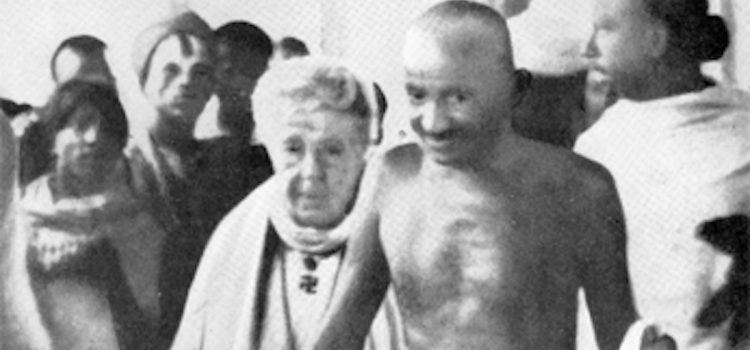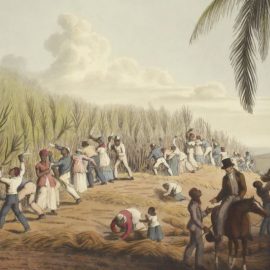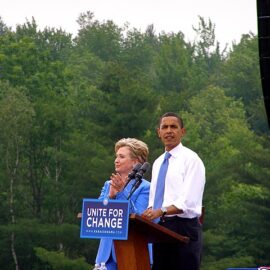

This article is an excerpt from the Shortform book guide to "The Story of My Experiments with Truth" by Mahatma Gandhi. Shortform has the world's best summaries and analyses of books you should be reading.
Like this article? Sign up for a free trial here.
What drove Gandhi to become a national leader in India? How did his experiences shape his views on British rule over time?
Mahatma Gandhi’s Satyagraha movement became a powerful tool against British oppression. His approach entailed peaceful disobedience and civil resistance to unjust laws.
Continue reading to learn about the pivotal moments in Gandhi’s journey, and discover how his actions inspired lasting change across India and beyond.
Mahatma Gandhi’s Satyagraha Movement
Gandhi’s experiences in South Africa prepared him to become a national leader in his country. He returned to India as a well-known defender of Indian rights. He defended farmers, laborers, and other disadvantaged groups from the British government’s unfair treatment. Over time, he says, these experiences changed his views on the British Empire, and he began to see independence as the only way for Indians to achieve their rights.
We’ll explore some of the highlights of Gandhi’s political leadership, which demonstrated his commitment to the nonviolent pursuit of Truth. Mahatma Gandhi’s Satyagraha movement was about nonviolent resistance to the British Empire’s oppression of Indians. Satyagraha (from the Sanskrit words sat, meaning truth, and agraha, meaning steadfastness) involved resisting unfair or immoral situations through nonviolent action. The nonviolent actions he endorsed were mostly disobeying laws in a way that didn’t endanger or harm anyone.
(Shortform note: Mahatma Gandhi’s Satyagraha movement inspired other freedom and equality movements around the world. For example, when US Civil Rights leader James Farmer led the first civil rights sit-ins in 1942, he employed nonviolent protest techniques he learned from Gandhi.)
Champaran Satyagraha
In 1917, Gandhi conducted his first satyagraha campaign in India. He met Rajkumar Shukla, a farmer from the Champaran region who shared that the British indigo planters were exploiting them. Gandhi was initially hesitant to take up the cause of the farmers who were forced by the planters to grow indigo on their land. He finally decided to travel to Champaran and conduct his investigation after much insistence from Shukla.
The Champaran Satyagraha involved different levels of nonviolent action. First, with his team of activists, Gandhi questioned hundreds of farmers to identify the injustices taking place. He also met with the planters to hear their side of the story and understand their needs. At the same time, he organized volunteers to provide education, medical care, and sanitation services for the farmers.
Many planters weren’t happy with Gandhi’s investigation, and they lobbied the government to pressure Gandhi to leave Champaran. He refused to leave unless the government began an official investigation into the farmers’ complaints. Gandhi continued his inquiry despite opposition and faced a court summons for violating an order to stop the investigation. Gandhi’s trial marked the first instance of civil disobedience—the refusal to comply with unfair laws—in the country and increased his popularity among the peasants.
Finally, the governor instituted a committee to investigate and invited Gandhi to be a member. The committee’s findings favored the farmers, and the abusive system the planters had used until then was abolished. This victory cemented Gandhi’s stance as a national leader.
Kheda Satyagraha
In 1918, Gandhi led a satyagraha movement in the Kheda district of India. Crops had failed and there were widespread famine and plague epidemics. The farmers or ryots asked the government to cancel the year’s tax since they hadn’t made a profit, but all their petitions failed.
Gandhi traveled to Kheda and led the farmers in a satyagraha resistance in which they refused to pay their taxes despite the government considering it illegal. Even those who could afford to pay promised not to, in solidarity with the farmers most affected by the failed crops. In response, the government pressured the farmers by taking away their agricultural machinery.
Gandhi says that after several months of resistance, they needed to find a resolution that would allow both sides not to lose face. He negotiated with the government to allow the poorest farmers not to pay their taxes but still collect from the ones who could afford to pay. Although it wasn’t a total victory, Gandhi still felt that the effort had been worthwhile because it showed the farmers that they had political power they could use to fight injustice.
The Amritsar Massacre
In 1919, the people of India were eager for independence. Gandhi explains that the nonviolent movement for national dignity was growing, but not everyone understood the principles of nonviolence. In Amritsar, which is located in the Punjab region of India, the people’s desire for justice and respect reached a boiling point. There were frequent confrontations between them and the government forces, which responded with unrestrained violence.
Gandhi’s response to the Amritsar Massacre exemplified his commitment to satyagraha and to uncovering Truth. Other leaders urged Gandhi to go to Amritsar soon after the massacre—but the government forbade him, which further enraged the population. Instead of traveling to the Punjab despite the prohibition, Gandhi decided to wait. He knew the people were looking to him for leadership, and he believed that if he had taken bold action, the people of Punjab would have used that as a cue for more violent resistance.
Instead, he had multiple conversations with government officials and showed them that allowing him to be there to engage with the people would help bring peace to the situation. Eventually, the government allowed Gandhi to travel to Punjab, and he spent time getting to know the locals’ grievances—finding the factual truth behind the violent events that had taken place, as well as the Truth that would bring morality and justice back to the community. He learned how the British government had been oppressing them, including making them crawl on their hands and knees when they traversed a specific road.
The Non-Cooperation Movement
In 1920, Gandhi participated in a gathering of Hindu and Muslim leaders in Delhi, an event that he says led to the birth of the term non-cooperation. Non-cooperation was a form of satyagraha that focused on rejecting and boycotting the rules that the British government imposed.
The gathering where Gandhi came up with the term “non-cooperation” was focused on discussing how both religious groups might respond to a divisive policy announced by the British Empire, which Gandhi refers to as “the Khilafat question.”
During this gathering, Gandhi proposed non-cooperation as a way to exert pressure on the British Empire. He believed it would achieve two aims:
- Send a message of opposition to the British government without using violence
- Unite Muslims and Hindus since both groups had separate grievances with the British Empire but would act together to oppose it
As a result of Gandhi’s advocacy, the Indian National Congress agreed to support the Khilafat movement through non-cooperation. Gandhi says this was an important step toward Hindu-Muslim unity and to the struggle for Swaraj, the self-government of India. However, many of his followers criticized him for investing so much effort into Hindu-Muslim unity.
Khadi Movement
The Khadi movement was part of Gandhi’s efforts for India to become less dependent on the British Empire. Gandhi’s activism gradually led him to the conclusion that they needed to be free of British rule. However, India’s economy was tied to the British Empire, and political independence would require economic autonomy, too.
Gandhi believed that one way for Indians to become autonomous was to start making their clothes, instead of relying on mills that traded with the British and imported much of the cotton used in India. Gandhi saw the khadi, a traditional Indian garment made of spun cotton, as the perfect vehicle for Indians to exercise their autonomy. Women could make khadis at home using spinning wheels, and it would be a source of income for them. In addition, it would invigorate the national textile industry, which would have to supply enough finely spun cotton for them to make their khadis. As part of his khadi activism, Gandhi learned to use the spinning wheel and dressed only in Indian-produced khadis.

———End of Preview———
Like what you just read? Read the rest of the world's best book summary and analysis of Mahatma Gandhi's "The Story of My Experiments with Truth" at Shortform.
Here's what you'll find in our full The Story of My Experiments with Truth summary:
- Gandhi’s life story from childhood until adulthood
- How Gandhi became a world-famous activist
- A look at Gandhi’s commitment to a nonviolent, austere lifestyle






